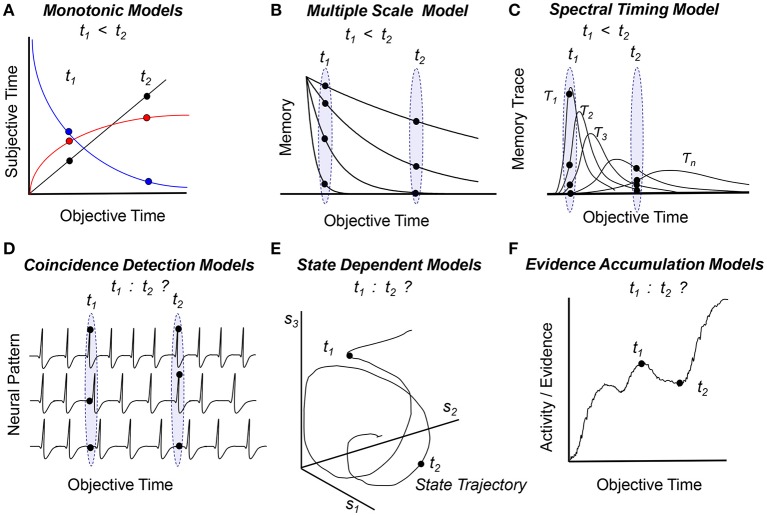Figure 1.
Temporal order within the framework of cognitive (A–C) and biological (D–F) models of timing and time perception. Panels indicate how models assess temporal order of two events at times t1 and t2 (see text for details) (A) Subjective time is a monotonic function of objective time (linear—black, logarithmic—red, or exponentially decaying—blue), such that the objective order of events can be inferred from the subjective representation of time, t1 < t2. (B) Multiple monotonic (exponentially-decaying) memory traces can convey temporal order. (C) Multiple non-monotonic traces that evolve at different speeds can also convey temporal order. (D) An internal representation of time based on patterns of firing neurons cannot in itself convey temporal order, as patterns have no intrinsic order. (E) Rather than being a coordinate, time could be considered a parameter of a system that follows a trajectory in a state-based coordinate system {s1, s2, …, sn}. Such systems can equally follow the same state trajectory toward the future or toward the past, thus, they have difficulty ordering events in time. (F) The pattern of activity of a population of neurons varies in time as the model accumulates evidence; evidence / activity / patterns correlate with time but are not solely representing time. Biological models (D–F) need extra assumptions / transformations / information to map activity / states / evidence / patterns to order of events; such information may be provided by chemical, electrical, and circuit level constraints rather than time itself.

